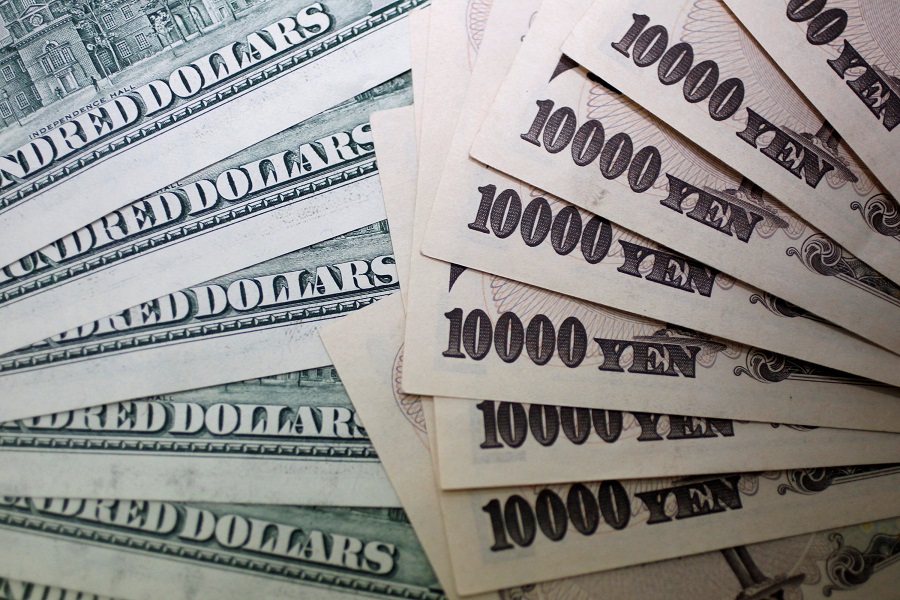
The yen remained under pressure on Thursday as the Bank of Japan kept ultra-low interest rates steady, while the U.S. dollar consolidated ahead of jobs data later this week and the U.S. presidential election next week.
The Japanese currency has taken a beating this month as the dollar and U.S. Treasury yields have hovered around their highest since July.
The yen has fallen more than 6% in October and is on track for what would be its biggest monthly loss against the greenback since November 2016.
Japan's political shake-up has only added to the yen's woes, heightening uncertainty about the country's fiscal and monetary policy outlook.
The BOJ kept interest rates steady on Thursday and roughly maintained its forecast that inflation will hover near its 2% inflation target in coming years, signalling its readiness to continue rolling back its massive monetary stimulus.
Analysts are divided over the prospect of additional interest rate hikes by year-end, putting the focus on BOJ Governor Kazuo Ueda's post-meeting briefing for clues on the pace and timing of further increases.
The yen was down 0.02% at 153.34 versus the dollar, largely unchanged after the BOJ's decision as it hung not far off a three-month low of 153.885 hit on Monday.
"Any strengthening of the yen at present would likely result from a general weakening of the U.S. dollar if interest rates begin to align," said Sean Teo, a sales trader at Saxo.
The recent decline in the yen may be making many traders cautious given that excessive weakening could grab the attention of Japanese authorities, he added.
Markets got more economic data from China ahead of the BOJ's decision, with the National Statistics Bureau's manufacturing PMI showing activity in October expanded for the first time in six months.
The official PMI rose to 50.1 in October from 49.8 in September, just above the 50-mark separating growth from contraction and beating a median forecast of 49.9 in a Reuters poll.
The offshore yuan held steady, last trading at 7.1309.
JOBS REPORT, PRESIDENTIAL ELECTION IN FOCUS
U.S. nonfarm payrolls closes out the week on Friday in the run-up to the presidential election on Tuesday.
Some investors have been putting on trades betting Republican candidate Donald Trump will win, although he is still neck and neck with Vice President Kamala Harris in several polls.
The dollar index, which measures the currency against six major rivals, rose 0.08% to 104.17, after softening the previous day. It hit its highest since July 30 at 104.63 on Tuesday.
"Data overnight reaffirmed the underlying strength of the U.S. economy, largely supporting what's already built into the price rather than providing a fresh catalyst for a renewed push higher," Westpac analysts wrote in a note.
U.S. private payroll growth surged in October, data showed on Wednesday, overcoming fears of temporary disruption from hurricanes and strikes.
Meanwhile, separate data showed the U.S. economy grew at an annualised rate of 2.8% in the third quarter, slightly lower than the 3% expected by economists.
The euro edged down 0.06% to $1.0849 after rising as high as $1.0871 on Wednesday. Regional inflation data and euro zone GDP came in stronger than expected on Wednesday, leading traders to trim back bets on an outsized rate cut from the European Central Bank in December.
Sterling stood at $1.29445, down 0.13% so far on the day.
Elsewhere, the Australian dollar slid 0.02% to $0.6573 after domestic retail sales numbers for September missed estimates, inching up just 0.1%. Analysts had looked for a gain of 0.3% in September.
The New Zealand dollar ticked up 0.04% to $0.5974.
